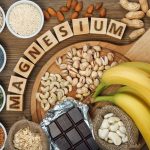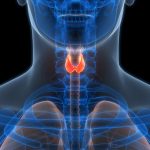
Runner’s “high” is so-called because of the euphoria associated with the release of feel-good chemicals in the brain, of which endorphins are one category. From a biological standpoint, the attainment of pleasure occurs when certain naturally-produced chemicals — such as serotonin, dopamine, and endorphins – get relayed to the brain. Understanding the powerful impact of endorphins on exercise initiation and maintenance is important for personal trainers and their clients to grasp.
Exercise as a Panacea?
Improved self-esteem, a key psychological benefit of regular exercise, comes from the body’s release of endorphins. Once introduced into the bloodstream, these chemicals interact with the receptors and neurotransmitters in the brain responsible for the reduction of perceived pain.
Endorphins also trigger a positive, almost euphoric, sensation throughout the body, similar to the effects one experiences with a dose of morphine. Such feelings often elicit a positive outlook on life. However, as we know, the release of endorphins and their effects do not typically lead to addiction or dependency.
The Biology of the “High”
The blood-brain barrier, or BBB, serves to keep substances circulating in the bloodstream out of the brain and central nervous system. Since endorphins cannot pass through this barrier, they do not directly cause the feeling of euphoria attributed to a “runner’s high.” This fact prompted researchers to look at other hormones often released at the same time as endorphins, such as endocannabinoids. These hormones, released during exercise concurrently with neurotransmitters, can successfully cross the blood-brain barrier.
Research continues in this area. While studies show that a runner’s high doesn’t depend on endorphins, scientists still do not have conclusive evidence that this feeling of euphoria is caused solely by endocannabinoids.
Endorphins and Improved Health
In addition to providing a drug-like euphoric sensation, researchers have found that endorphins may help facilitate appropriate blood pressure and body temperature. Individuals who secrete endorphins during moderate to high levels of stress have a lower heart rate and seem able to remain calm even in moments of extreme psychological duress.
Of the euphoria-inducing drugs mentioned above, endorphins have proven the most potent. Often referred to as natural opiates, endorphins present themselves at the onset of such stimuli as pain, eating, sex, fear, exercise, certain music, and meditation. When such activities occur, these chemicals, known as neurotransmitters, venture out as messengers between gaps (synapses) in nerve cells. One’s very mood appears as a function of the number of neurotransmitters present in the synapses at a given point in time.
Endorphins and Opioids Do Differ
Opioids possess a structure similar to endorphins and exert the same basic effect—they block pain signals. However, while opioids may achieve that effect within about 20 seconds, endorphins require up to a minute or two to fully react. This difference reflects the fact that opioids can expediently move into a cell, whereas endorphins must first bind to a receptor. This speed highlights the reason opioids easily become addictive.
The Exercise Connection
While endorphin production in the body can pack a powerful punch, 20-30x more potent than morphine, these chemicals break down quickly in the body, losing their effectiveness within mere minutes. For this reason, learning to stimulate the body’s production of these chemicals naturally may offer a safer mood boost, as we find with exercise.
Engaging in 30 minutes/day of aerobic exercise seems the greatest way to produce high levels of endorphins. The stimulus exercise confers exceeds that of laughing, meditation, and even consuming favorite foods. Scientists have found that the release of endorphins during and after daily exercise causes pain relief coupled with effortlessness, peace, or a buzz of contentedness.
The aerobic exercises which seem to contribute the most to increased endorphin production include cycling, running, weight training, swimming, and cross-country skiing, among others. Atko Viru, Ph.D., a world-renowned endorphin researcher from Estonia, has noted that “you need to exercise at around seventy-six percent of your maximum heart rate to get the endorphin effect.” Anything lower and your body won’t be in enough distress to warrant the pain-fighter’s appearance.”
By following an exercise program on a regular basis, one with which the athlete feels a good degree of familiarity, the body elicits a greater level of endorphin, promoting a natural high while staying in excellent physical condition.
Tempering Emotion Commotion
Not only does working out on a consistent basis help ward off obesity, heart disease, and cancer; such activity seems to elevate one’s emotional and mental outlook on life as well. Researchers found that breast cancer patients who normally experience high levels of anxiety and depression felt significantly less so after completing a 10-week exercise program. A similar study found that men who regularly engage in exercise face a potential 2/3 less likelihood of developing depression than their more sedentary cohorts.
As fitness professionals, we can with considerable confidence recommend exercise to achieve the euphoric high which calms the body and tempers the mind. As a result of a regular exercise program, not only will one experience a greater increase in health benefits, but a nice “thank you” in the form of an opiate-like endorphin “high”. The combination of these two effects will open the door of life’s opportunities, providing those who choose to take advantage of this knowledge with greater confidence, happiness, and pleasure in their lives.
A Word of Caution
As mentioned above, an individual who believes they need an endorphin rush most likely refers to the experience brought on by the influx of endocannabinoids. While there hasn’t been a lot of research on this topic, studies have shown that such individuals seek out high-intensity activities that will trigger the release they crave. This can easily lead to overexercising, which comes with its own unique challenges and health issues. For clients who present with such tendencies, trainers might wish to offer a more thorough explanation of how to find a middle ground, deriving all of the positive aspects without damaging the body.
References
[ 1]. Douglas G. Mook, Motivation: The Organization of Action, (W.W. Norton and Company, New York, 1996) 27
[2]. Kay Marie Porterfield, “The Brain’s Natural Opiates: Endorphins”. Cosmopolitan November 1989: 166
[3]. Ibid, 166 [4]. Cesar Galvez, “It’s All In Your Head”. American Fitness September/October 1998: 26
[5]. Ibid, 27
[6]. Ibid, 27
[7]. Owen Anderson, “The Buzz On Exercise”. Men’s Health January 1995: 88
[8]. Ibid, 89
[9]. Ibid, 90
[10]. Kim A. McDonald “Scientists Consider New Explanations For The Impact Of Exercise On Mood”. The Chronicle of Higher Education 14 August 1998: A15
[11]. https://www.webmd.com/depression/guide/exercise-depression
[12]. https://pubmed.ncbi.nlm.nih.gov/29262177/
[13]. https://www.mhanational.org/what-are-endorphins






